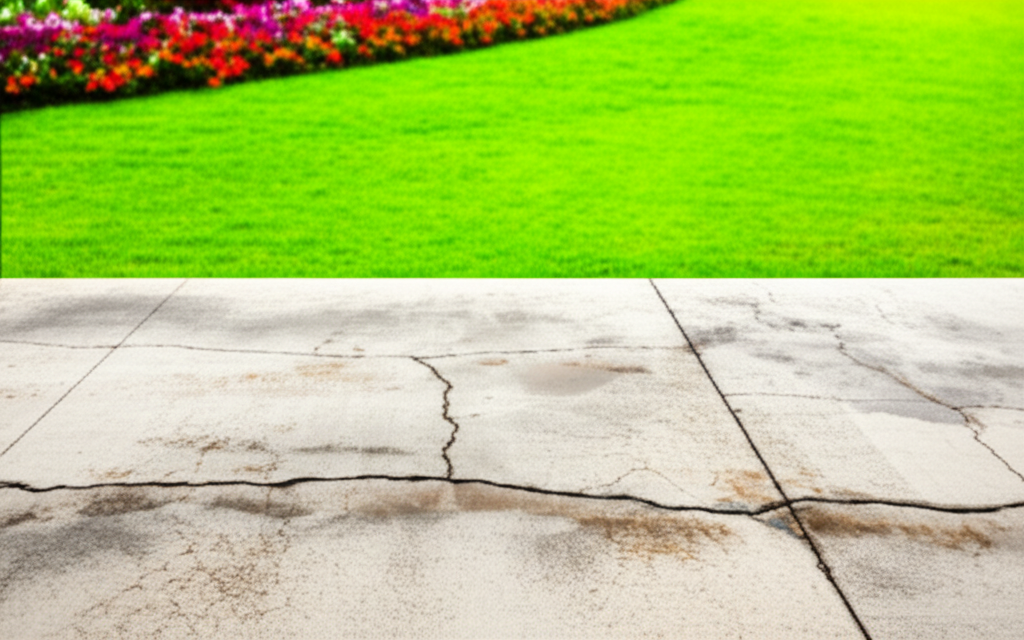Are you dreaming of a sleek, low-maintenance outdoor space? Poured concrete might seem like the perfect solution, promising durability and minimal upkeep. But is it really the cost-effective, hassle-free dream it's cracked up to be? The truth is, while concrete has its advantages, it also comes with a set of harsh realities that home builders often gloss over. This article dives deep into the pros and cons of poured concrete, revealing the brutal truth and helping you make an informed decision about your landscaping project.
What are the Pros of Choosing Poured Concrete?
Concrete's popularity stems from some genuine advantages:
Durability: A Foundation That Lasts
Properly installed concrete is incredibly durable. It can withstand heavy foot traffic, vehicle weight, and harsh weather conditions for decades. This makes it ideal for driveways, walkways, patios, and even makeshift basketball courts. Unlike artificial turf, concrete can handle the constant pressure of vehicles without significant wear and tear.
Low Maintenance: The Allure of Effortless Upkeep
One of the biggest selling points of concrete is its low maintenance. No weeding, no mowing, and minimal washing are required. A simple brushing and occasional rinse with soap and water are usually enough to keep it looking its best. This translates to significant time and cost savings compared to natural grass or more demanding landscaping options.
Customizability: Beyond the Gray Slab
Gone are the days of boring, gray concrete. Today, you can choose from a wide range of colors, shades, and design patterns to complement your home's overall aesthetic. Landscapers often offer catalogs of stylish concrete designs, allowing you to create a truly unique outdoor space.
Upfront Cost Savings: A Budget-Friendly Option?
Concrete is often cheaper than artificial turf, at least initially. Installation costs are typically lower, making it an attractive option for homeowners on a tight budget. The ease of installation also contributes to its cost-effectiveness.
What are the Cons of Choosing Poured Concrete? The Brutal Truth
Despite its advantages, concrete has several downsides that you need to consider:
Appearance: Can it Really Look Good?
While customizable, concrete can still look dull and lifeless compared to a lush green lawn or the vibrant colors of natural stone. Even with stylish designs, it can lack the warmth and natural appeal that many homeowners desire. Overuse of concrete can create a stark, uninviting environment.
Staining: A Permanent Reminder of Accidents
Cheaper, non-resistant concrete is prone to staining. Oil spills, paint splatters, and tire marks can permanently mar its surface, spoiling the appearance of your outdoor living spaces. Prevention is key, but accidents happen, and the consequences can be unsightly.
Difficult Repairs: A Costly Fix
While durable, concrete can still crack over time due to ground movement, temperature fluctuations, or heavy impact. Repairing significant cracks or breaks is often difficult and expensive, potentially requiring the removal and replacement of the entire section.
Environmental Impact: A Concern for Eco-Conscious Homeowners
Concrete production is not environmentally friendly. It contributes to carbon emissions and resource depletion. Furthermore, concrete surfaces prevent water from seeping into the ground, leading to increased runoff and potential pollution of waterways, especially in areas where vehicles are parked.
Poured Concrete vs. Artificial Turf: Which is Right for You?
The choice between poured concrete and artificial turf depends on your priorities and budget.
- Choose Concrete if: Durability, low maintenance, and upfront cost savings are your top priorities. You're willing to compromise on aesthetics and are mindful of potential staining and environmental concerns.
- Choose Artificial Turf if: You prioritize a natural-looking, soft surface, are willing to invest more upfront, and are less concerned about long-term durability and the environmental impact of manufacturing and disposal.
What are Some Alternatives to Poured Concrete?
If you're not convinced by either concrete or artificial turf, consider these alternatives:
Pavers: A Stylish and Versatile Option
Pavers are individual stones or tiles that interlock to create a patterned surface. They offer a more natural look than concrete and come in various designs, sizes, and colors. Pavers are also easier to repair than concrete, but they require more maintenance due to weed growth and potential loosening.
Decking: A Warm and Inviting Choice
Decking involves wooden planks laid side-by-side to create an outdoor flooring. It provides a warm, cozy aesthetic and can be elevated from the ground. However, decking is more expensive than pavers or concrete and requires regular cleaning, staining, and protection from rot and fungi.
Frequently Asked Questions
Is concrete really low maintenance?
Yes, concrete is generally low maintenance. You'll need to sweep and wash it occasionally, and reseal it every few years, but it requires significantly less upkeep than natural grass or other landscaping options.
How long does poured concrete last?
With proper installation and maintenance, poured concrete can last for 30 years or more. However, cracking and staining can occur over time, affecting its appearance and longevity.
Is concrete environmentally friendly?
No, concrete production has a significant environmental impact. Consider using recycled concrete or exploring alternatives like pavers or permeable paving to reduce your environmental footprint.
Conclusion: Make an Informed Decision
Poured concrete offers undeniable benefits in terms of durability and low maintenance. However, its potential drawbacks, including aesthetic limitations, staining issues, environmental impact, and repair challenges, cannot be ignored. By carefully weighing the pros and cons and exploring alternatives, you can make an informed decision that aligns with your budget, aesthetic preferences, and environmental values. Don't let home builders sell you on a one-sided story. Empower yourself with the truth and create an outdoor space that truly meets your needs. Now, take the first step: research local landscapers and get quotes for different materials and designs to compare your options.

